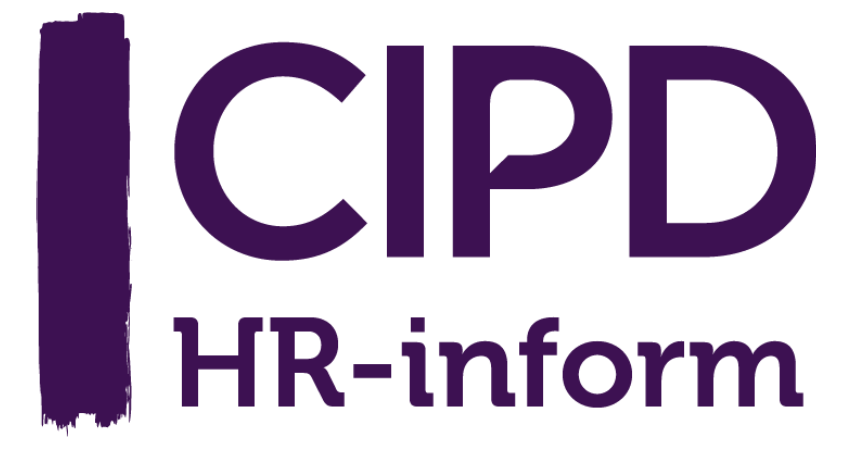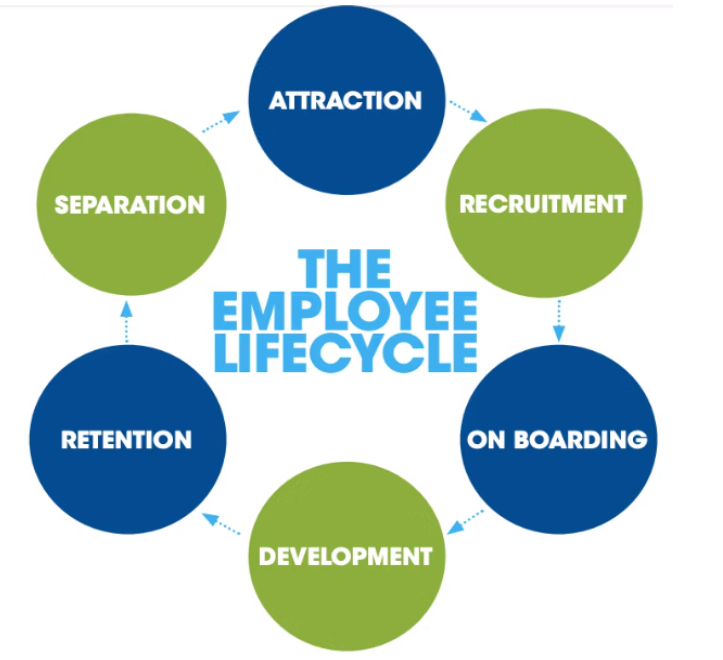The Employee Life Cycle, or ELC, is a conceptual framework that describes the various steps. that employees face during their employment careers The idea begins with the process of attracting a large number of prospective applicants. to the employee's departure from the company This covers the process of recruiting, onboarding, developing, retaining, and separating workers. There are challenges and opportunities for employees and employers at different stages; Therefore, it is essential that the organization manages it effectively.

In turn, an understanding of ELC helps HR professionals embed the employee experience within organizational goals to create a positive work culture that demonstrates engagement and productivity. Strategically managing each step under ELC will encourage companies to Achieve higher levels of satisfaction among employees, reduce turnover and ensure organizational success. CIPD says a well-managed employee lifecycle promotes individual growth. but also maintains the health of the organization as a whole.
What Are The Stages Of The Employee Life Cycle According To CIPD? (Employee Life Cycle In HR)
According to the Chartered Institute of Personnel and Development CIPD, the employee life cycle is defined as a model that HR professionals utilize to understand how employees may be managed through various stages in their tenure with the organization.

This life cycle includes the following key steps: Attraction, Recruitment. Onboarding, development, maintenance, and separation.
Attracting And Recruitment
The first phase involves attracting and recruiting potential employees. This includes creating job descriptions. Creating ad placements and interviews It is important to ensure that the recruitment process is fair and impartial. For those moving to the UK Understanding local employment laws and obtaining relevant qualifications such as CIPD membership...
Onboarding And Induction
When employees are hired The preparation process will begin. This step involves integrating the new employee into the company culture. and provide the tools and information necessary to work effectively. Effective onboarding can improve employee engagement and reduce turnover rates.
Development
Employee development is a continuous process that includes training. Performance evaluation and career development opportunities Providing employees with opportunities for growth and development can lead to greater job satisfaction and retention.
For people who wish to take up positions in HR, exposure to many areas of the employee lifecycle is useful.
Engagement And Retention
Employee retention also involves ensuring a good working environment. Ensuring remuneration packages are on par with others and celebrating employees' success. Retention strategies ensure stability among the employees, thus minimizing waste occasioned by high turnover rates. Experience and skills: CIPD certification
Separation Or Exit
The employee has to go, and this is either voluntary-on grounds such as resignation or retirement-or involuntary, which may be on grounds of termination or redundancy.
This stage concerns the smooth process of exit, including exit interviews, which determine the reason behind leaving a particular organization, and handing over responsibilities.
Professional exit management ensures good relations are maintained and allows an organization to learn from its mistakes.
Why does the Employee Life Cycle Matter in HR?
The Employee Life Cycle matters in HR because it helps ensure a positive employee experience at every stage, from recruitment to exit. By effectively managing each phase, HR can boost employee engagement, productivity, and retention. This leads to cost savings, improved performance, and a more stable, motivated workforce.
Employee Experience:
When the human resources department organizes and manages the employee life cycle in a positive and good way, this will have a positive and satisfactory impact on the employee, and this will be reflected in improving the employee’s performance and experience at work.
Engagement And Productivity:
Employees who are engaged and feel cared for at every stage of their career. will emerge well and prove to be able to sustain the organization in the long run.
Cost Efficiency:
Proper management of each step reduces recruitment, training, and turnover costs. and help organizations retain top talent which reduces cost and increases efficiency.
Organizational Development:
The Employee Lifecycle provides great insight for HR into areas that may need development to improve talent management and employee performance which is definitely beneficial to the organization.
Achieve Your HR Goals with Bakkah’s Accredited CIPD Programs!
Dreaming of a career where you can drive change, foster talent, and create impactful workplace cultures? Bakkah’s CIPD courses are designed to equip you with the knowledge and skills needed to become an exceptional HR leader.
👉 Why Bakkah’s CIPD Courses Are the Right Choice:
- CIPD Accreditation: Our courses are fully accredited, ensuring you gain a respected qualification recognized by employers globally.
- Hands-On, Practical Learning: Our curriculum is built around real-world HR scenarios, helping you develop the skills you need to succeed.
- Flexible Study Formats: Whether you prefer online learning, part-time study, or in-person classes, we offer flexible options that fit your schedule.
- Networking & Support: Join a community of HR professionals and gain access to invaluable resources, events, and mentorship opportunities.
✨ Course Levels to Suit Every Stage of Your Career:
- Level 3: Get started with foundational HR knowledge for beginners.
- Level 5: Deepen your understanding of HR and take your career to the next level.
- Level 7: Master advanced HR strategies to lead at senior levels.
🎯 Start Your HR Journey with Bakkah Today!
Whether you’re new to HR or aiming for an executive role, Bakkah’s CIPD qualifications can help you unlock your career potential.
📅 Sign Up Now and transform your career with our accredited CIPD courses!
Conclusion
The Employer's Employee Life Cycle (ELC), according to the CIPD (Chartered Institute of Personnel and Development) is a sequence of phases that all employees experience throughout their employment with the employer, from joining to leaving. These stages typically involve appealing to and hiring staff members; planning, training, retention and separation
The understanding of ELC is crucial to the effective management of the employee experience by HR professionals and increasing organizational performance. Thus, allowing HR to boost employee engagement by meeting employee needs and expectations at every touch-point. Promote positive organizational culture Improve employee retention and drive the development of talented personnel
Moreover, ELC sheds light on the employee journey in areas where the HR needs to act upon at different touchpoints: improving the process of recruitment, providing opportunities for personal development, and applying good practices for terminations. This holistic approach links employee satisfaction to the goals of the organization. For this reason, workers will be even more productive, efficient, and sustainable.


